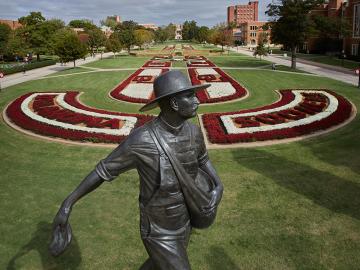Filter News
Area of Research
- (-) Fusion and Fission (14)
- (-) Materials for Computing (18)
- Advanced Manufacturing (7)
- Biology and Environment (37)
- Building Technologies (1)
- Clean Energy (69)
- Computational Biology (1)
- Computational Engineering (2)
- Computer Science (4)
- Electricity and Smart Grid (1)
- Fusion Energy (1)
- Isotopes (12)
- Materials (15)
- Mathematics (1)
- National Security (7)
- Neutron Science (16)
- Nuclear Science and Technology (1)
- Quantum information Science (3)
- Sensors and Controls (1)
- Supercomputing (21)
- Transportation Systems (1)
News Topics
- 3-D Printing/Advanced Manufacturing (4)
- Advanced Reactors (2)
- Biology (1)
- Chemical Sciences (5)
- Composites (1)
- Computer Science (4)
- Coronavirus (2)
- Energy Storage (2)
- Environment (1)
- Fusion (8)
- High-Performance Computing (1)
- Isotopes (1)
- ITER (4)
- Materials (7)
- Materials Science (10)
- Microscopy (4)
- Nanotechnology (5)
- National Security (1)
- Neutron Science (5)
- Nuclear Energy (5)
- Polymers (4)
- Quantum Computing (1)
- Quantum Science (2)
- Security (1)
- Sustainable Energy (3)
- Transportation (3)
Media Contacts

A discovery by Oak Ridge National Laboratory researchers may aid the design of materials that better manage heat.

In experiment after experiment, the synthetic radioisotope actinium-225 has shown promise for targeting and attacking certain types of cancer cells.

Researchers at ORNL designed a novel polymer to bind and strengthen silica sand for binder jet additive manufacturing, a 3D-printing method used by industries for prototyping and part production.

A team led by the U.S. Department of Energy’s Oak Ridge National Laboratory demonstrated the viability of a “quantum entanglement witness” capable of proving the presence of entanglement between magnetic particles, or spins, in a quantum material.

ORNL and the University of Oklahoma, known as OU, recently executed a memorandum of understanding to officially recognize their partnership in pursuing shared research and development goals.

Analytical chemists at ORNL have developed a rapid way to measure isotopic ratios of uranium and plutonium collected on environmental swipes, which could help International Atomic Energy Agency analysts detect the presence of undeclared nuclear

ORNL's Larry Baylor and Andrew Lupini have been elected fellows of the American Physical Society.

Staff at Oak Ridge National Laboratory organized transport for a powerful component that is critical to the world’s largest experiment, the international ITER project.

Diego Del-Castillo-Negrete, a distinguished staff member in the Fusion Energy Division, was cited for Outstanding Technical Achievement – National Laboratory. He will be recognized during the GMiS annual conference, which will be held virtually Oct. 11-22. The HENAAC awards program is in its 33rd year.

Pengfei Cao, a polymer chemist at ORNL, has been chosen to receive a 2021 Young Investigator Award from the Polymeric Materials: Science and Engineering Division of the American Chemical Society, or ACS PMSE.




